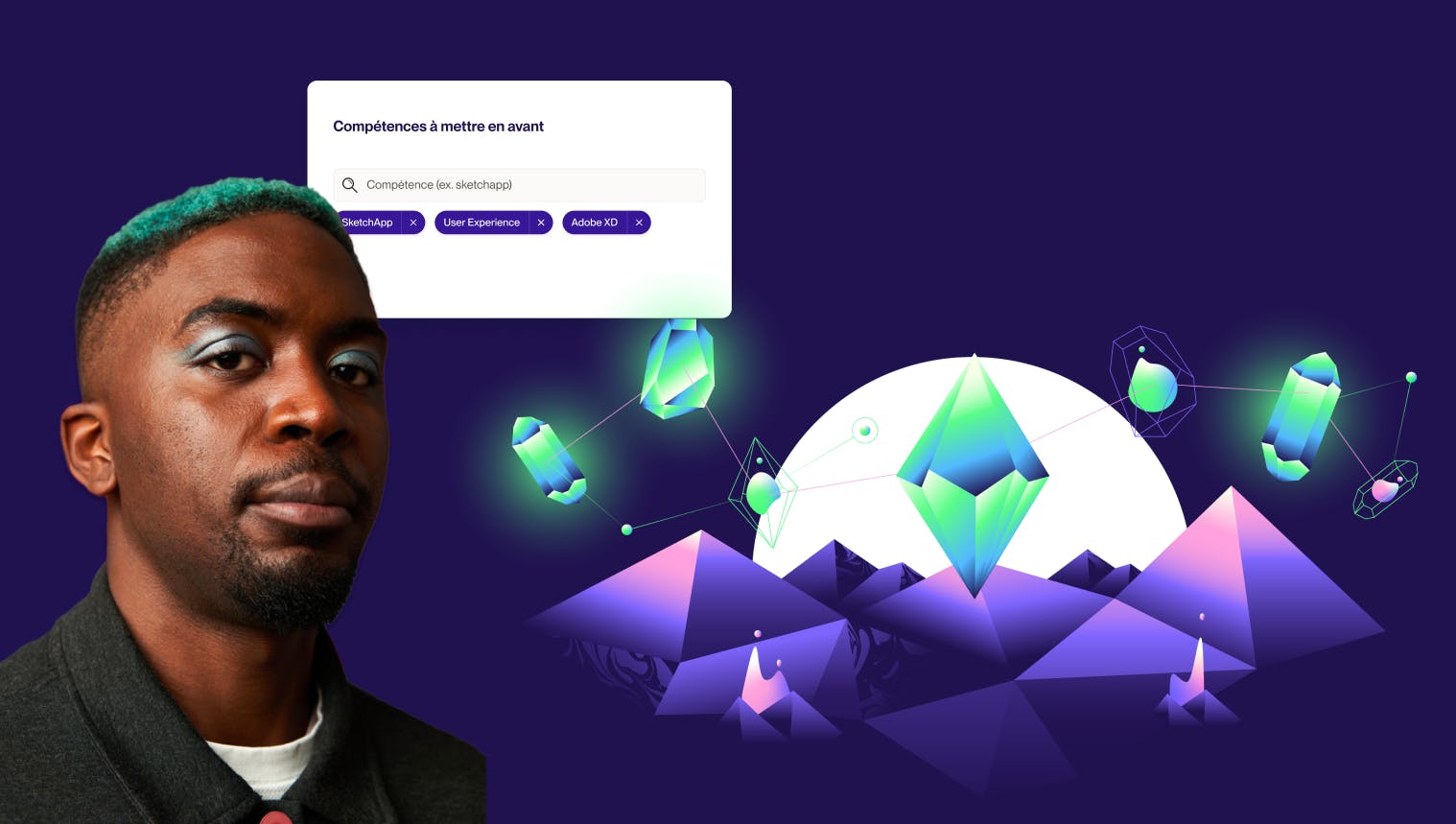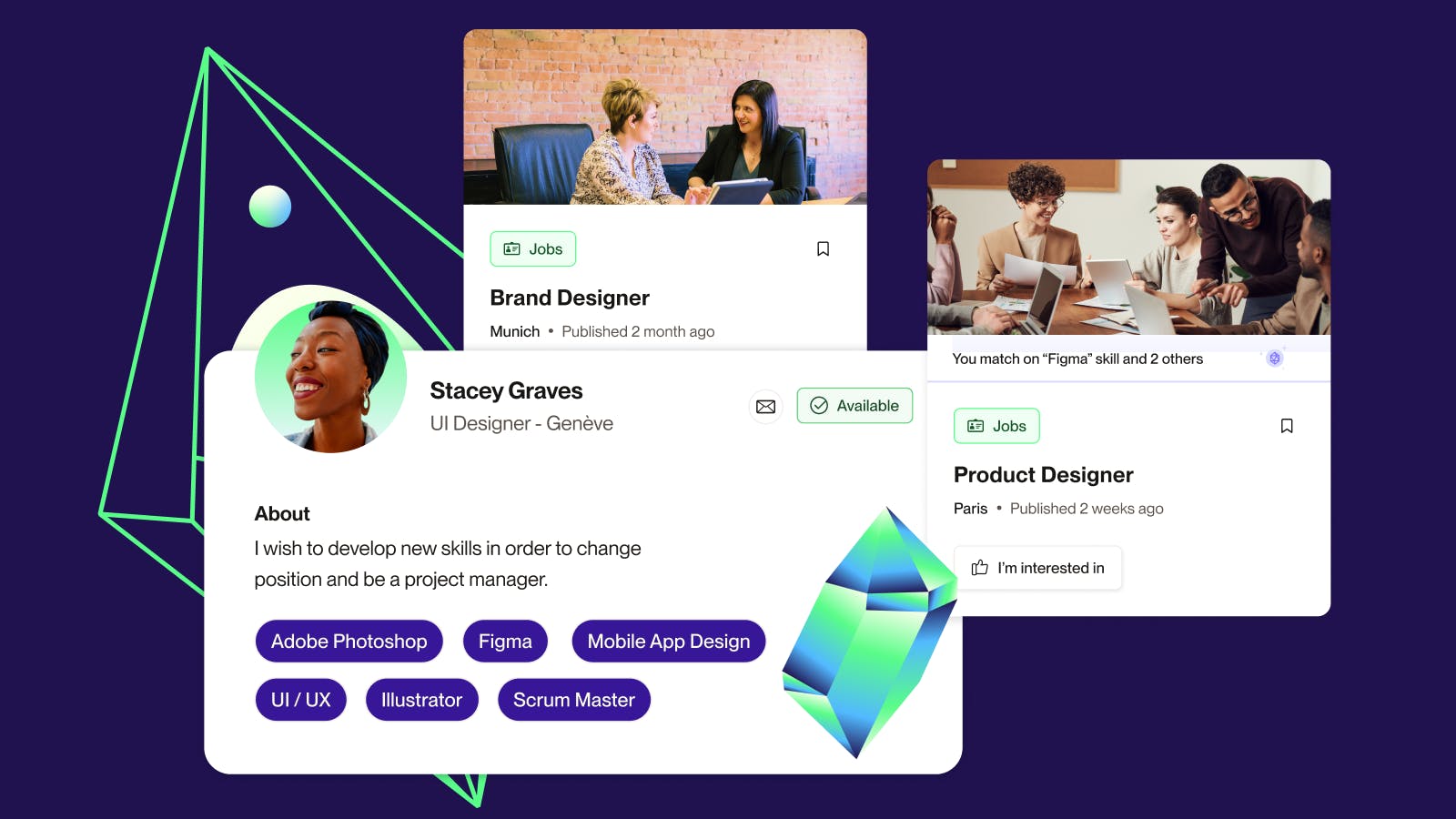Embracing the Skills-First approach: a strategic take for HR in 2024

In today's ever-changing workplace, there's a noticeable shift away from conventional job titles toward a more dynamic, skills-centric approach. This evolution is bringing notable enhancements for businesses as they lead the way in prioritizing the skills necessary for specific tasks.
This approach demonstrates its effectiveness by opening up broader talent pools, boosting employee productivity, and facilitating more equitable access to opportunities. Furthermore, it effectively tackles talent retention by prioritizing the cultivation of skills that align with organizational objectives.
Introducing: The Skills-First Approach
Definition of “skills-first”
The term “skills-first” is increasingly utilized by businesses to explain a new approach to talent management that emphasizes a person's skills and competencies in place of degrees, job backgrounds, or titles. Its main objective is attracting, hiring, growing, and redeploying expertise.
A skills-first technique focuses on the skills rather than how they were acquired. This methodology can democratize access to career opportunities and career paths, helping to put the right skilled people in the right jobs without economic or social bias.
“For employers, a skills-first approach can create more robust talent pipelines – and may help to address skills shortages.”
World Economic Forum,
,Putting Skills First: A Framework for Action, May 2023
If team leaders and HR professionals are unaware of all the reasons why they should think of skills first, here are a few of them.
Skills-first vs people-first: what are the differences?
The distinction between a “skills-first” and a “people-first” approach in HR lies in their respective priorities and perspectives:
A Skills-First Approach:
- Emphasizes on identifying and leveraging the specific skills and competencies of employees.
- It focuses on matching individuals with roles based on their abilities and expertise rather than solely considering job titles or personal characteristics.
- Encourages skills development, training, and upskilling to ensure employees remain competitive and adaptable in their careers.
- Views talent management through the lens of skills alignment with organizational goals and needs.
A People-First Approach:
- Centers on the holistic well-being and development of employees as individuals beyond their skills and professional capabilities.
- Prioritizes fostering a supportive and inclusive workplace culture where employees feel valued, heard, and empowered.
- Considers factors such as work-life balance, career satisfaction, personal growth professional skills and performance.
- Focuses on building strong relationships between employees and management, promoting open communication, trust and collaboration.
While both approaches aim to optimize organizational performance and employee satisfaction, their primary focus differs: skills versus individuals' holistic needs and experiences. A balanced HR strategy may integrate elements of both approaches to effectively meet the workforce's diverse needs while aligning with broader business objectives.
Objectives of thinking skills-first
The objectives of a skills-first approach in HR are multifaceted, aiming to align employee capabilities with organizational goals while fostering a dynamic and adaptable workforce.
Here are the key objectives:
- Strategic Workforce Planning: Identify and prioritize critical skills and competencies required to achieve organizational objectives. This involves assessing current skill gaps, forecasting future needs, and developing strategies to acquire, develop, or retain necessary skills.
- Skills Development and Training: Implement targeted training and development programs to enhance employee skills and competencies aligned with business priorities. Provide opportunities for upskilling, reskilling, and continuous learning to support career advancement and adaptability.
- Performance Management: Evaluate employee performance based on their ability to apply and improve relevant skills in their roles. Set clear performance expectations tied to skill development objectives and provide regular feedback to support growth and development.
- Succession Planning: Identify high-potential employees and develop talent pipelines for critical organizational roles. Foster a talent mobility and internal promotion culture by investing in developing future leaders and essential skill areas.
- Employee Engagement and Retention: Recognize and leverage employees' skills and expertise to foster a sense of purpose, autonomy, and mastery in their work. Opportunities for skill-based challenges, career progression, and meaningful contributions enhance engagement and retention.
- Agility and Adaptability: Build a flexible and resilient workforce capable of adapting to changing business needs and market dynamics. Empower employees to develop and apply new skills, fostering a culture of innovation, experimentation, and continuous improvement.
- Data-Driven Decision-Making: Utilize skills, data, and analytics to inform HR strategies, resource allocation, and talent management decisions. Leverage insights from skills assessments, performance evaluations, and workforce analytics to optimize organizational effectiveness and efficiency.
- Talent Acquisition and Recruitment: Recruit and select candidates based on their skill sets, expertise, and potential to contribute effectively to the organization. Prioritize skills assessments and competency-based interviews to ensure the right fit for each role.
Embracing the Skills-First paradigm: a Strategic Approach for HR in 2024

The trend towards a skills-based approach is gaining momentum in the constantly evolving world of modern business, becoming a key focus for progressive and innovative organizations that want to shape the future of work. Therefore, when planning for 2024, it is crucial to prioritize skills and the beauty of it lies in the flexibility for the entire talent lifecycle and experience. By establishing a common language and a unified currency for hiring candidates, building employee growth, and developing alumni’s employability, HR teams and management can gain valuable insights for their strategy and business intelligence.
As we explore this transformative approach further, it's crucial to take note of some key statistics that emphasize its growing recognition: 84% of business leaders advocate for talent approaches to shift towards focusing on skills rather than rigidly adhering to traditional job roles. This statistic underscores the changing mindset of organizational leaders who acknowledge the essential role of skills in creating a resilient and adaptable workforce.
A skills-first approach helps to increase productivity
According to Deloitte, organizations building a skills-first culture are 63% more likely to achieve results across 11 key business and workforce outcomes than those who have not adopted skills-first practices, such as:
- Meeting or exceeding financial targets
- Anticipating change and responding effectively and efficiently
- Innovating
- Achieving high levels of customer satisfaction
- Positively impacting society and the communities served
- Improving processes to maximize efficiency
- Being a great place to grow and develop
- Placing talent effectively
- Providing workers with a positive workforce experience
- Delivering an inclusive environment
- And retaining high performers.
Giving your employees more tools and processes to be efficient, more opportunities to grow, and more satisfaction will boost their motivation and engagement, resulting in higher productivity within your organization.
Putting skills at the core of your opportunities for their career development will help employers extend their function and become Experience Designers. They will assign the right people with the right skills for each role, understanding their skills gaps and strengths plus starting upskilling plans accordingly.
A Skills-first approach supports talent mobility, upskilling, and redeployment
A skills-centric approach encourages ongoing learning and development, empowering employees to stay relevant and competitive in their careers. Seeing your employees through the lens of their skills helps HR clearly define the skills the organization has and the skills it doesn’t. They’ll be able to show their teams their strengths and the skills gaps they need to fill to progress in their roles and careers.
Human Resources can then provide new talent mobility and upskilling programs.
A skills-first approach aligns business strategies and goals with growth and adaptability
On the other hand, employees also need to stay competitive and ahead of industry transformation as the market constantly evolves, and so does the need for new skills. Companies redeploy their workers to support this transformation and their employability, while HR creates reskilling and upskilling plans. They can then fill up roles with the right people according to their specific needs and the organization's needs simultaneously.
According to a Deloitte Insights study, 77% of business and HR executives say flexibly moving skills to work is critical to navigating future disruptions.
A skills-first approach can help fill these roles and answer to market changes and trends, supporting long-term growth and adaptability.
A Skills-first approach for growth and development to boost engagement
HR supports growth and adaptability for the company and its workforce by giving their employees reskilling and upskilling plans, allowing them to stay competitive and improve their employability. As new worker generations think career development opportunities are significant, thinking skills first is also helpful to leverage employee engagement and loyalty.
It enables HR departments to enhance engagement and retention by adopting a novel approach to gathering insights and comprehension as individuals are recognized as multifaceted assets rather than confined to a single role. Embracing a skills-centric mindset empowers HR to facilitate a more dynamic array of opportunities and it gives employees the opportunity to gain increased access to information and avenues that broaden their perspectives, and enables them to map out their career trajectories.

A Skills-first approach unlocks hidden talent pools
Recent projections suggest that by 2030, approximately 85 million global job positions may still need to be fulfilled due to a shortage of skilled applicants, potentially resulting in unrealized annual revenues totaling $8.5 trillion. This reinforces the findings of the Forum's Future of Jobs Report 2023, which identified the inability to find skilled talent as a primary barrier to business and industry transformation across various sectors and regions in the forthcoming years.
Within this context, adopting a skills-first approach can assist organizations in identifying and attracting a diverse array of hidden talent who might otherwise remain untapped in the labor market. A recent research done by LinkedIn indicates that globally, the pool of potential candidates can expand by nearly 10 times on average when utilizing a skills-first approach, highlighting its efficacy in addressing talent shortages, reducing time-to-hire, and generating associated cost savings.
Moreover, concentrating on internal talent groups possessing comparable or closely related skill sets, and requiring minimal upskilling and reskilling, can be a successful tactic for organizations to promptly and cost-effectively tackle significant skills gaps.
Mapping skills adjacency across industries and acknowledging credentials based on skills for particular roles and high-demand professions can effectively assist displaced workers in transitioning to related positions, thereby reducing adverse short-term impacts from disruptions.
A Skills-first approach promotes diversity, equity and inclusion
By implementing skills-first strategies such as recruiting (externally or internally) based on skills, eliminating formal degree prerequisites for certain positions, acknowledging alternative credentials, or relying on skills-focused evaluation methods, barriers to entry can be diminished. This paves the way for a more inclusive labor market, encouraging individuals from non-traditional backgrounds to explore job opportunities.
For instance, individuals with disabilities who are less likely to hold a bachelor's degree often feel discouraged from applying for positions with such requirements. But it doesn’t mean they don’t have the necessary skills or are not ready for upskilling! Furthermore, this approach may increase productivity by fostering higher employee motivation and engagement.
Using skills proficiency as the foundation for career development discussions can promote accountability and drive employee and employer success. This fosters greater equity and transparency by clearly delineating the skills required for each role, enabling individuals to identify their skill gaps and strengths, and empowering them to pursue relevant upskilling opportunities.
With regular smart suggestions and engagement prompts, 365Talents can help your employees begin to think about career growth as an ongoing experience – not a check-in and sudden change that happens once every three years. It puts your people in the position of thinking about the future and helps them prepare with the skills they need for the moment (or promotion!) when it arrives.
For HR, the explanation functionality also helps you see how the skills mindset can be applied and adopted. Seeing the most-searched-for skills can help you see where genuine interest exists on your team. Because 365Talents doesn’t use defined career paths and our AI will suggest positions based on skills, it encourages and teaches HR to think about people’s growth in a similar, borderless style.
Finally, much as 365Talents leverages AI to allow you to put the heart back in HR, 365Talents offers dedicated support from a team of real, human customer success consultants who will help you implement both the tool and the mindset every step of the way.








Strategic Takeaways for a Skills-centric organization:
Think skills-first before people-first:
Redirect your focus towards skills, making them the central currency in your talent strategy. This shift transcends traditional people-centric approaches, fostering a more dynamic and adaptable organizational culture.
Put skills at the heart of your organization:
Elevate skills to a position of strategic importance within your organizational structure. This involves integrating skill considerations into decision-making processes, from recruitment and employee development to strategic planning.
Define your meaning of skills:
Clearly articulate what skills indeed 'mean' in the context of your organization. This encompasses a comprehensive understanding of soft skills, technical proficiencies, functional expertise, and individual interests and behaviors.
Adopt a new agile and problem-focused approach:
Embrace the trend of unbundling traditional job roles. In 2024, organizations are leaning towards a more adaptive model of work. Pivoting towards a problem-focused approach helps to steer away from conventional job-centric thinking and identify the challenges to be addressed or the ideal outcomes to be achieved, fostering a more proactive and solutions-oriented mindset.
Make skills a language:
Leverage a unified skills language to create skills-first employee experiences, from the hiring process to offboarding, to help solve the latest HR trends, challenges, and transformations and build an agile talent pipeline for the sector.
Connect skills management to your ecosystem:
Now, how do you clearly visualize all of your company’s skills? How do you collect and manage them properly? You need to integrate a skills management platform into your organizational ecosystem, ensuring it is employee-centric and transparent. This connection facilitates a seamless flow of skills-related information and insights across various functions.
Establish a single source of Skills Data:
Establishing a single source of skills data, a Skills Hub, is crucial to collecting and gathering all skills data across your company. It facilitates easy management of your skills, data, ontology, and analytics. Your skills management platform can be your skills hub.
Cultural and technological transformation:
Let’s clarify that a skills-first approach requires both cultural and technological shifts. You must have a good change management plan for your employees and your HR team where everyone should be involved, prepared, and empowered to share talent more freely within the organization, fostering a collaborative and skill-centric culture.
The 365Talents AI was designed and trained for use in HR and skill detections—that’s why we refer to it not just as artificial intelligence but as skills intelligence. 365Talents allows employees to define their skills and ambitions in their own words, on their own terms. It continuously improves the accuracy of the employees’ profile for better matching and provides HR managers with a clearer view of the company’s internal skills.
For global enterprise companies of a certain size and ambition, 365Talents delivers a seamless and smart experience across more than 45 languages. It empowers individuals to express themselves authentically and in their preferred language, fostering an inclusive and personalized talent management experience tailored to the diverse linguistic needs of global companies.
Additionally, 365Talents integrates Generative AI to refine talent acquisition and development by keeping your skills ontology updated with the latest trends in your industry. Our advanced AI system is designed to identify the most relevant skills in the market and efficiently recognize trending jobs. By doing so, it provides HR professionals with up-to-date knowledge about the critical skills and job roles that are in high demand.
Most importantly, 365Talents makes skills accessible to all your other HR processes and systems. Integrating with over 50 HR applications, your skills framework powered by 365Talents can serve as a common language for Talent Management and Talent Experience.
Want to learn more about how you can shift to a skills-based HR strategy? Get in touch with 365Talents today.

















